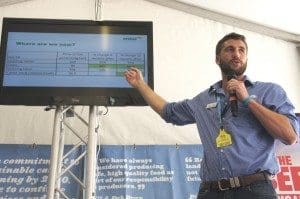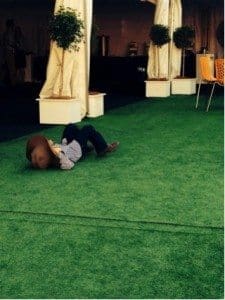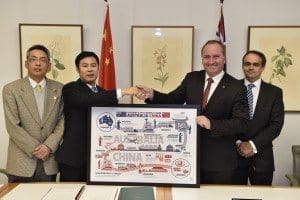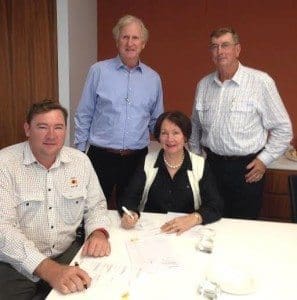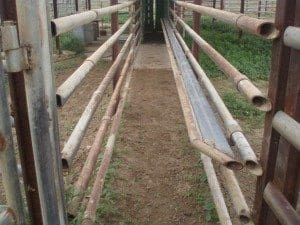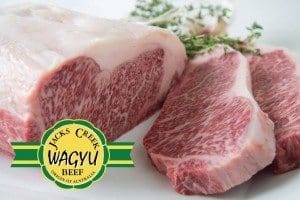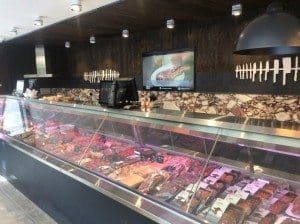Another big year for the beef industry has almost drawn to a close. Here we revisit some of the most popular stories from Beef Central in 2015, as judged by reader traffic.
1. Falling herd, rising prices
Ongoing drought conditions, shrinking cattle numbers, new Free Trade Agreements and higher cattle prices defined Australian cattle market news in 2015. A 17pc decline in the Australian dollar added further support to cattle prices, which rose on average by 40pc-50pc through the year, according to MLA’s NLRS. Export demand from key markets has also been strong, with the notable exception of retreating US conditions in recent months. At the Beef 2015 expo in May this year the exciting picture for Australian beef prices was outlined by Meat & Livestock Australia’s Ben Thomas:
‘Extraordinary times ahead’ for Australian beef, says MLA chief analyst
Think cattle prices have reached a new level in 2015, but may now start to stabilise given the recent big rises in numbers?
Think again, if price movement performance seen in previous big Australian drought events is any indication.
2. Feedlots: big getting bigger
Feedlot capacity in Australia grew by 25 percent over the past 10 years, a Beef Central analysis of Australia’s Top 25 lot feeding operations found in early 2015. While some of that expansion was driven by the entry of new players, most came through existing operators expanding their feedlot infrastructure. The combined capacity of the 25 largest lot feeders grew from 550,000 head to 695,000 head in the past decade, while at the same time the total number of feedlots in Australia declined from 650 to 400. Driving that consolidation trend? The never-ending search for efficiency. The “sweet-spot” for a modern feedlot enterprise is now around 10,000 head, immediate past ALFA president Don Mackay told Beef central, which, perhaps not coincidentally, was the minimum size of feedlots on the list of Australia’s 25 largest lot feeders. Revisit Beef Central’s Top 25 Lot feeders report here
Beef Central profiles Australia’s 25 largest lotfeeders
Beef Central’s exclusive Top 25 Lotfeeders list for the first time ranks the nation’s largest Lot Feeders, by one-time capacity. This authoritative list will be kept as a permanent feature on Beef Central to act as a handy reference tool for industry stakeholders.
3. Beef 2015
The numbers convey the epic scale: 90,000 visitors, 1000 international guests from 55 countries, 4000 top-quality stud and commercial cattle, 100,000 beef meals served, more than 600 trade exhibits on-site. But the raw figures do not adequately convey the “buzz” of the event, the electric atmosphere that came from tens of thousands of people from different areas but similar interests converging in one space, particularly in an atmosphere of rising cattle prices and optimistic market forecasts. By the end of the week, most people were feeling like the little bloke pictured below: well and truly tuckered out. Like Neil Armstrong said of his trip to the moon, “you just had to be there”.
Wholly cow – Rocky brings home the beef
Brisbane’s popular steakhouse the Norman Hotel happily claims the title of being Australia’s worst vegetarian restaurant.
By the same logic, what 90,000 people experienced in Rockhampton last week must rank as Australia’s worst vegetarian expo.
4. China live export market opens
The biggest livestock export story of the year was the opening of a potentially major new market with the signing of a new feeder and slaughter protocol between Australia and China. The breakthrough sparked widespread media interest and hype, with some headlines suggesting the trade may soon take one million cattle a year. However, almost six months after the protocol was signed, only one consignment has been delivered under the newly minted protocol, a one-off consignment of slaughter cattle flown to China by Elders to christen the opening of the trade. Tough protocol conditions have prevented serious trade activity yet, particularly a rule which requires imported cattle to be processed within 50km of their point of entry into China. However, several new feedlots are now under construction to satisfy this requirement, and the first high-volume sea-shipments are expected to occur within the first half of 2016.
Aust signs breakthrough livex deal with China
Years in the making, the much-anticipated and long-awaited opening of a live export trade for feeder and slaughter cattle from Australia to China has just been confirmed by Minister for Agriculture, Barnaby Joyce, this afternoon.
5. Foreign investment
Consecutive years of inactivity in the Australian cattle property market were broken by a flurry of major property sales and agribusiness investment deals in 2015. The key trend was the source of the buying support itself, with foreign buyers dominating transactions throughout the year while local interest from individuals, corporates and investment/superannuation funds was largely subdued. Many transactions were completed before the Federal Government passed legislation in November to reduce the point at which foreign purchases must be scrutinised by the Foreign Investment Review Board from a trigger level of $252 million to $55 million for agribusinesses and $15 million for land. China was the leading source of offshore interest in Australian cattle grazing land and beef supply chain assets in 2015, with 12 transactions involving Chinese purchases documented in this article.
Weekly property review: Chinese investment in Australian beef – Is it as big as it sounds?
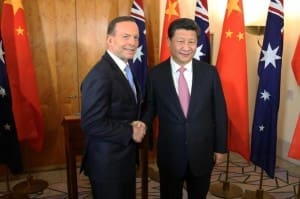 Despite perceptions that Chinese investors are buying up large areas of Australian farmland, statistics and research do not support the contention that China is now Australia’s dominant offshore agricultural investor.
Despite perceptions that Chinese investors are buying up large areas of Australian farmland, statistics and research do not support the contention that China is now Australia’s dominant offshore agricultural investor.
A series of reports into Chinese direct investment in Australia by KPMG and The University of Sydney’s China Studies Centre, titled “Demystifying Chinese Investment in Australian Agribusiness” provide insight into the current scale and composition of Chinese investment.
6. Govt blocks Kidman sale Anna Creek carved off
The sale of the world’s largest parcel of land to Chinese interests seemed all but assured given the number of foreign purchases that had been approved throughout the year. However Federal Treasurer Scott Morrison surprised everyone by blocking the deal on the grounds it was not in the national interest. S. Kidman & Co is now being reoffered for sale minus Anna Creek – the world’s single largest cattle property – which borders the Woomera weapons testing site, effectively reducing the size of the land parcel by one quarter.
S. Kidman & Co’s stalled deal: Where to from here?
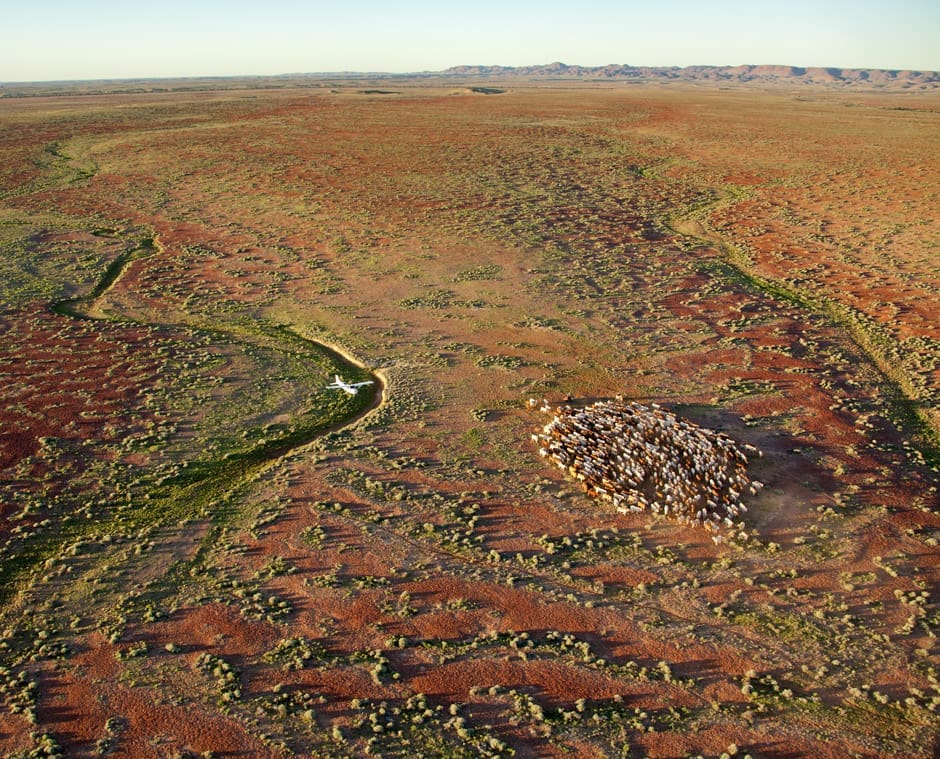 S. Kidman & Co’s board will seek clarification on issues raised in this morning’s Federal Government decision to reject the proposed sale of the major northern beef producer to Chinese interests, described as being “contrary to the national interest.”
S. Kidman & Co’s board will seek clarification on issues raised in this morning’s Federal Government decision to reject the proposed sale of the major northern beef producer to Chinese interests, described as being “contrary to the national interest.”
In an interview with Beef Central soon after this morning’s announcement Kidman managing director Greg Campbell said the company’s board was now absorbing the implications of the announcement, and would explore what options it now had.
7. Australian Country Choice-Acton Land & Cattle JV
At least one notable exception to the trend of foreign investment in agribusiness deals this year was the announcement of a joint venture between vertically integrated beef processor Australian Country Choice and Queensland’s Acton Land & Cattle Co, to operate the Acton family’s extensive cattle operations across central and northwestern Queensland. With a herd of 135,000 cattle the deal formed a significant new supply chain platform, and reflected a broader trend by downstream beef industry infrastructure owners to move to secure future supply amidst a rapidly diminishing Australian beef cattle herd.
ACC, Acton form joint venture on cattle operations
Vertically integrated beef processor Australian Country Choice and Queensland’s Acton Land & Cattle Co have formed a joint venture to operate the Acton family’s extensive cattle operations across central and northwestern Queensland.
A statement issued this morning said the Lee family, which owns ACC, and the Acton family owners of Acton Land & Cattle Co, have formed a new joint venture to lease the Millungera, Croydon, Rugby Run, Moray Downs and Iffley cattle properties, including ongoing management of the properties and ownership of the cattle herd.
8. Useful stock handling solution
The simple solutions are often the best. When a reader posed a question on Beef Central asking if anyone knew of a practical way to stop young cattle from turning around in large races designed for older stock, Hughenden cattleman Jim Lindsay responded with an elegantly simple solution – a small hanging rail that can be suspended inside a race to effectively narrow its width to a size that keeps weaners feeling comfortable and moving forward. Read more about it in the article below.
Other popular livestock handling and production stories on Beef Central this year included:
- Is this Australia’s hardest working cattle crush
- 10 common electric fencing tips
- Rethinking the family farm: a collaborative farming success story
- Crossbred steers return $100/hd more in NT trial
A simple way to stop weaners turning around in adult-sized races
Weaners turning around in races are a common cause of wasted time and frayed tempers for many cattle men and women.
But one producer has come up with a simple solution that has all but eliminated the problem on his northern Queensland cattle properties.
9. Wagyu riding the wave
The high marbling beef breed generated plenty of interest in 2015 as it crested the wave of rising prices, with several Wagyu-based articles featuring prominently among our most read items for the year, including:
- At 220kg is this Australia’s most expensive grassfed beef?
- $450 makes Wagyu steaks the most expensive in Australia
- Red hot results for Wagyu on AuctionsPlus – what’s driving it?
- Rinehart shelves major Gympie dairy project in favour of Wagyu
Australian-bred Wagyu was also celebrated on the world stage in October when an entry from Jack’s Creek Wagyu in NSW won the World Steak Challenge:
Aussie entries blitz World Steak Challenge, headed by Jack’s Creek Wagyu
Australian entries blitzed the first World Steak Challenge held in London on Thursday, earning the coveted title of World’s Best Steak, and picking up four of eleven gold medals awarded in the competition along the way.
The competition was a true United Nations event, attracting 70 entries from the United States, Japan, Canada, Scotland, England, Northern Ireland, Wales, Germany, New Zealand, the Netherlands and Uruguay, as well as Australia.
10. Investments in supply chain innovation
While much of the focus has been on farm-gate conditions and implications for future cattle supply, in the downstream sector significant investments in innovation have been underway. Some examples reported by Beef Central this year included:
- TFI’s new Murray Bridge Boning Room re-sets standards for processing;
- JBS moves to acquire controlling interest in robotics technology;
- Woolies on track to launch new Melbourne meat facility;
- Eumundi meat shop takes traditional butcher in exciting new directions
New Sydney retail butchery aims to tick consumer boxes on beef’s provenance, integrity
It’s not every day that retail butchery customers can see a National Vendor Declaration form displayed in the shop, but a new high-end retail butchery in Sydney is taking provenance and brand identity in its meat offer to another level.
Opening its doors for business last Friday was the impressive new 1888 Certified independent butchery in Sydney’s Double Bay – a well-heeled part of the city where discriminating consumers have a reputation for applying a lot of scrutiny to the food they eat, and are prepared to pay for it.

